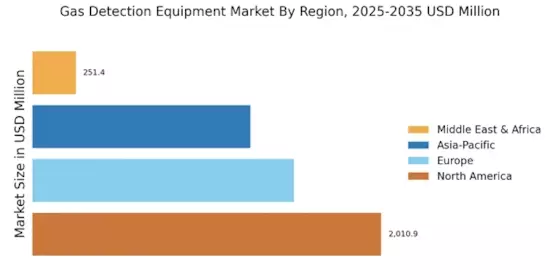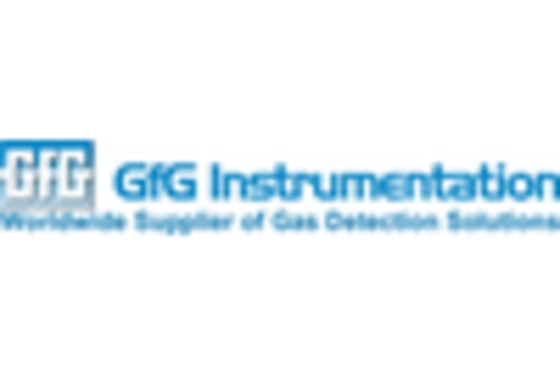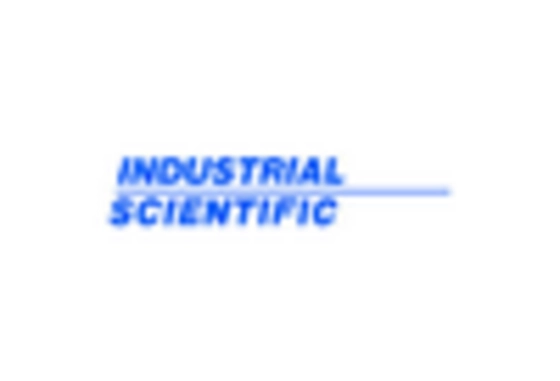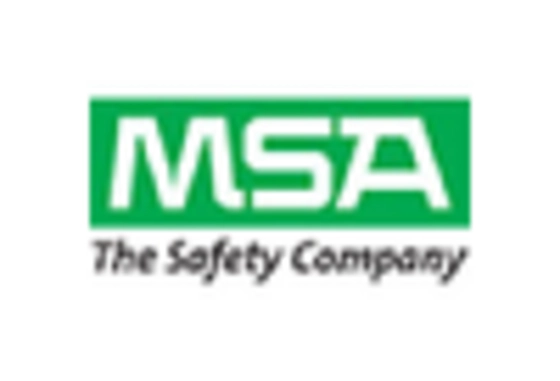Rising Industrial Safety Standards
The Gas Detection Equipment Market is experiencing a surge in demand due to the increasing emphasis on industrial safety standards. Regulatory bodies are mandating stringent safety protocols across various sectors, including oil and gas, chemicals, and manufacturing. This trend is likely to drive the adoption of advanced gas detection systems, including wireless gas detection systems, as companies seek to comply with regulations and ensure the safety of their workforce. In fact, the market for gas detection equipment is projected to grow at a compound annual growth rate of approximately 7% over the next few years, reflecting the heightened focus on workplace safety. As industries prioritize risk management, the Gas Detection Equipment Market is poised for significant expansion.
Growing Awareness of Environmental Hazards
The Gas Detection Equipment Industry is significantly influenced by the rising awareness of environmental hazards associated with gas emissions. Industries are increasingly recognizing the importance of monitoring and controlling gas leaks to mitigate environmental impact. This awareness is prompting companies to invest in gas detection systems that not only ensure compliance with environmental regulations but also enhance their corporate social responsibility initiatives. The market is expected to see a notable increase in demand for environmentally friendly detection solutions, as organizations strive to minimize their ecological footprint. Consequently, the Gas Detection Equipment is likely to benefit from this shift towards sustainable practices.
Increased Focus on Workplace Safety Culture
The Gas Detection Equipment Market is benefiting from an increased focus on cultivating a workplace safety culture across various sectors. Organizations are recognizing that fostering a safety-oriented environment not only protects employees but also enhances productivity and operational efficiency. This cultural shift is driving the demand for reliable gas detection systems, as companies seek to proactively identify and mitigate risks associated with gas exposure. Training programs and safety drills are becoming commonplace, further emphasizing the importance of gas detection equipment in maintaining a safe workplace. As this trend continues, the Gas Detection Equipment is likely to see sustained growth.
Expansion of Oil and Gas Exploration Activities
The expansion of oil and gas exploration activities is a key driver for the Gas Detection Equipment Market. As energy demands continue to rise, companies are investing heavily in exploration and production, particularly in remote and offshore locations. This trend necessitates the deployment of advanced gas detection systems to ensure safety and compliance in potentially hazardous environments. The market is projected to witness substantial growth as exploration activities increase, with gas detection equipment becoming an integral part of operational safety protocols. The Gas Detection Equipment Market is thus positioned to capitalize on the ongoing expansion in the energy sector.
Technological Advancements in Detection Systems
Technological innovations are transforming the Gas Detection Equipment Market, leading to the development of more sophisticated and efficient detection systems. The integration of smart technologies, such as IoT and AI, enhances the capabilities of gas detectors, allowing for real-time monitoring and data analysis. These advancements not only improve detection accuracy but also facilitate predictive maintenance, reducing downtime and operational costs. The market is witnessing a shift towards portable and multi-gas detectors, which are increasingly favored in various applications. As these technologies evolve, the Gas Detection Equipment is likely to attract investments and drive further growth.


















Leave a Comment